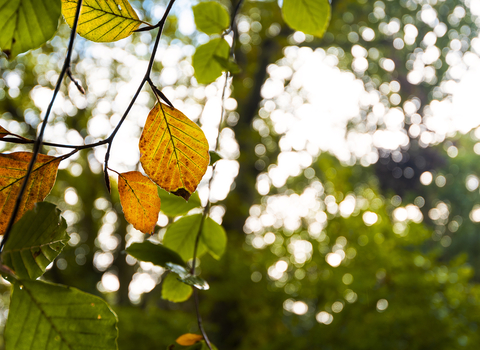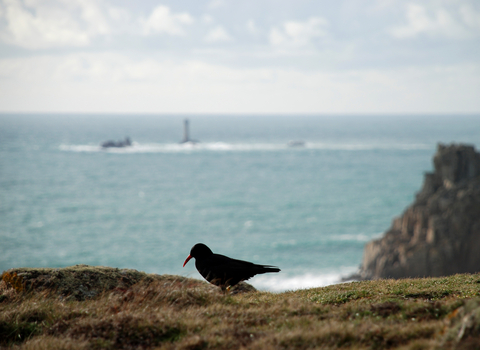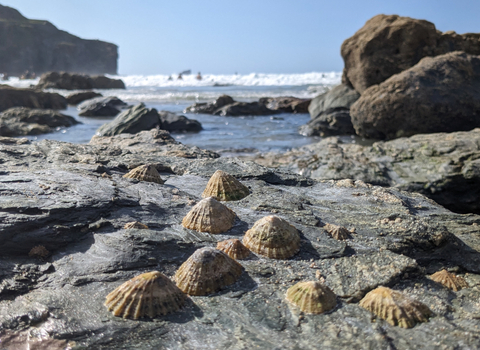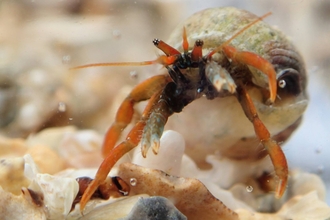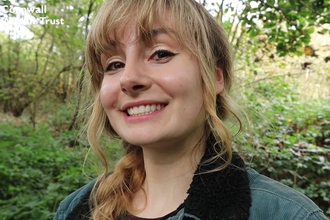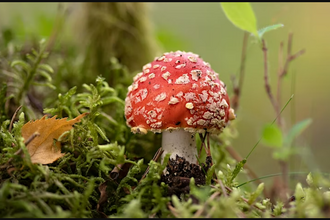As the weather cools and the beaches get quieter, October is the perfect time to get out and spot wildlife. Whether on the ground, in the trees or set against a beautiful autumnal sunset sky, there are some truly splendid wildlife spectacles to be discovered.
Here are some of October's highlights...
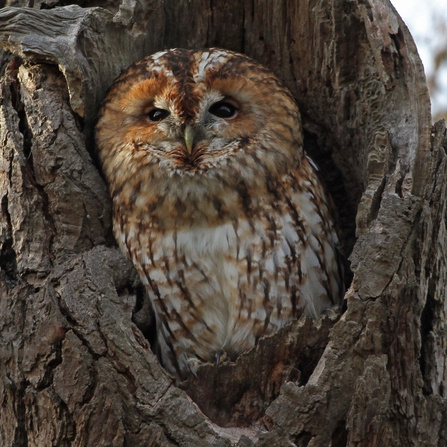
Tawny owl © Margaret Holland
Tawny owls
Tawny owls are our biggest common owl, familiar in Britain’s woodland, parks and gardens. The ‘too-wit too-woo’ call often referred to as being the song of the generic owl, is that of the tawny owl. But it isn’t the call of a single bird, but instead made by a male and female calling to each other. The female makes a ‘too-wit’ sound and the male answers with ‘too-woo’!
Tawny owls are very vocal in autumn when competing over territory. Young birds are reaching maturity and looking for new homes while older birds are fighting to hold on to their patch.
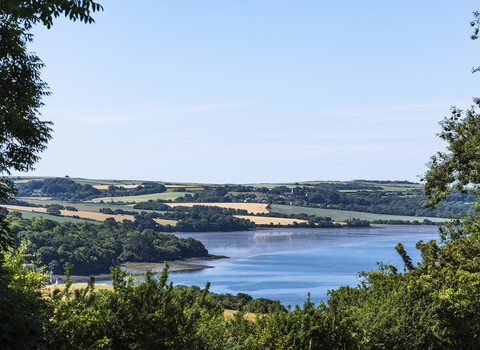
View through the trees at Churchtown Farm, Image by Ben Watkins
Visit Churchtown Farm
Churchtown Farm nature reserve in east Cornwall lies in a strategic position on the edge of Saltash with spectacular views over the scenic waterways that connect Plymouth and the Tamar Valley to the sea. In October look out for wildfowl and wader species, which can be found at the reserve’s Forder Creek area and out in the estuary. Redshank, greenshank, curlew, wigeon and teal can be seen and heard around the sheltered bays, whilst further out you may spot a great crested grebe.
Puffballs, Image by Rowena Millar
Fungi
With more than 15,000 species in the UK, fungi make up an entire kingdom of their own. These curious beings are neither plant, nor animal, and their diversity is stupendous. Chicken of the woods and King Alfred’s cakes, pink ballerinas and scarlet elf cups, blewits and boletes; some are delighfully named, some delicious, and others poisonous. Every habitat is home to a great variety of fungi, and autumn is the best time to explore this little-visited world: you may well be surprised at just how many you come across!
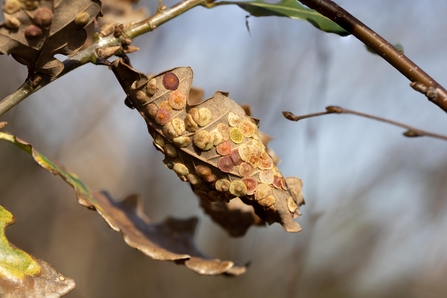
Common spangle galls on an oak leaf, Ventongimps by Paul Hopwood
Go gall spotting
The common spangle gall wasp is a tiny wasp, Neuropterus quercusbaccarum, that causes a growth, or 'gall', on the underside of oak leaves in early autumn. It is common and widespread, and a single leaf can host up to 100 galls, each containing a single larva. The galls fall to the ground and can be seen around oak trees during autumn. The larvae continue to develop through the winter, and emerge as adults in April. The common spangle gall wasp produces a brown, disc-shaped gall on the undersides of oak leaves. You are more likely to see the galls than the adult gall wasps or the grubs. However, there are several similar, disc-shaped galls that grow on oak trees.
Get to know your spiders
At this time of year, spiders suddenly seem to be a lot more present. In late summer and early autumn some spiders become more active as males reach maturity and seek out a female to woo. Now's the time to really get to know a bit more about our eight legged friends.
- Garden Spider Araneus diadematus – can be found on just about any bush in Cornwall right now, the species which makes large webs in your garden. The gravid females are particularly chunky.
- House Spider Eratigena saeva – the big hairy spider that makes you jump when it runs across the floor in the evening (usually a male out looking for a female)
- Money Spider Erigone spp. (and others) – when the conditions are right, thousands of these tiny spiders decide to disperse en masse by ballooning – using their silk to catch the wind and take flight. They leave behind silken threads which glisten in the autumn sun like gossamer.
- Noble False Widow Steatoda nobilis – not so scary as some people say, they can be found on or in just about any building in Cornwall and are quick to retreat into a crevice when they feel threatened.
- Lesser Garden Spider Metellina segmentata – smaller and less obvious than the garden spider, they build circular webs in trees and bushes
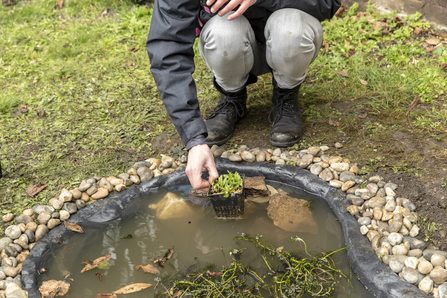
Image by Penny Dixie
Take action: build a pond!
A wildlife pond is one of the single best features for attracting new wildlife to the garden. It is thought that some amphibians, such as frogs, are now more common in garden ponds than in the countryside. You can build a pond at any time during the year, but if you start in autumn or late winter, it will get established much quicker.
Go WILD this autumn!
Curious about what else can be found this season? Dive deeper into the topic of autumn wildlife with our blogs and articles below.

